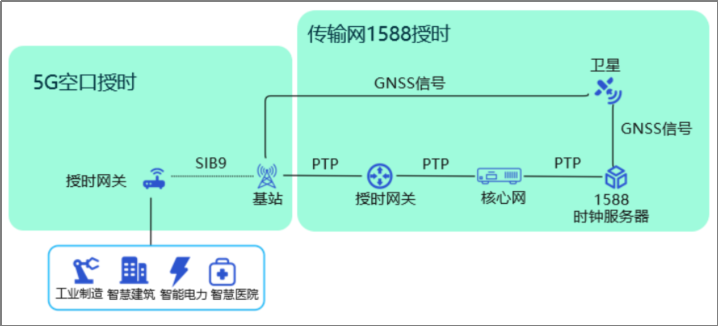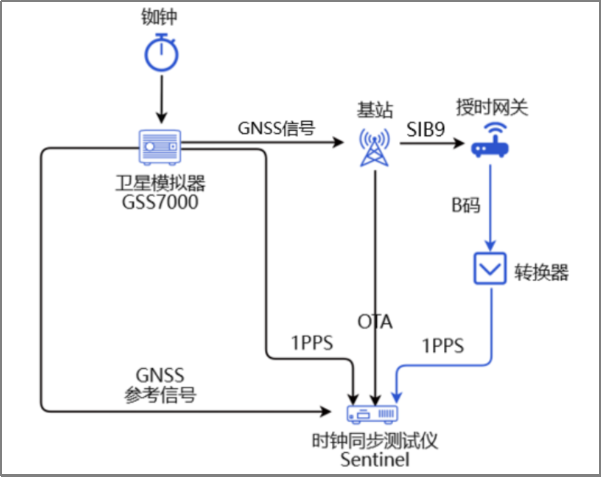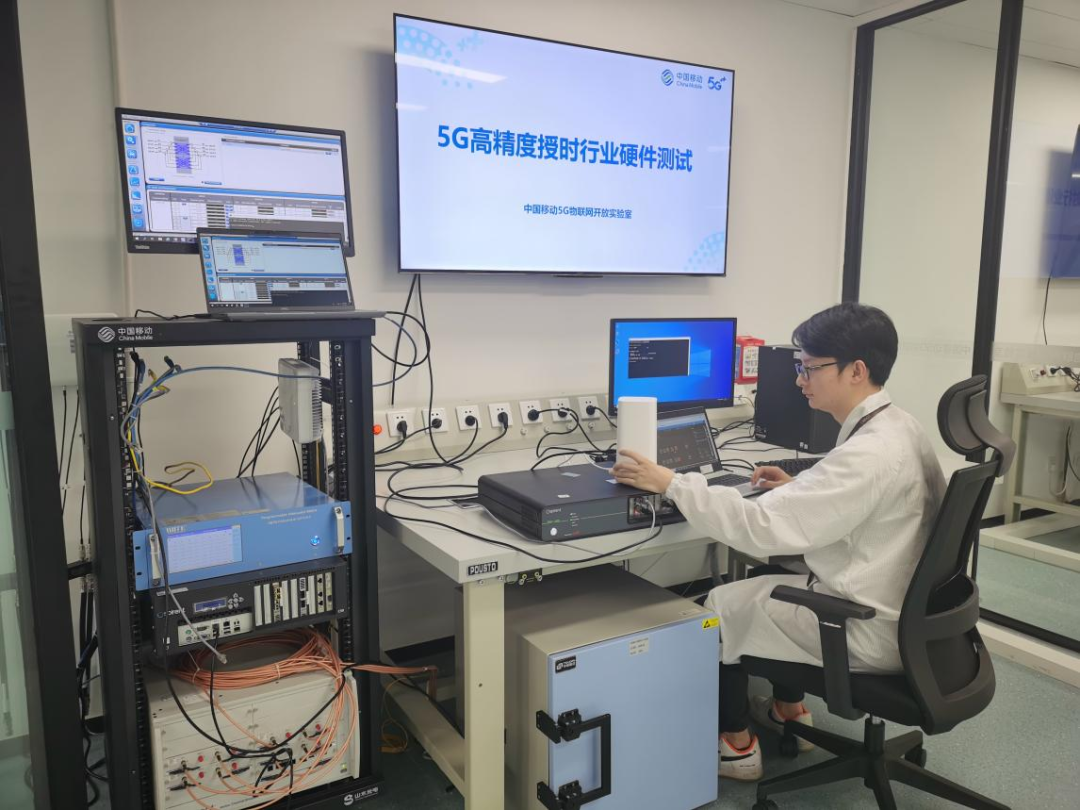
With the development of Internet of Things (IoT) technology, the number of clock synchronization-related services is gradually increasing, and the demand for time synchronization accuracy in IoT devices is becoming higher. Recently, China Mobile Internet of Things Co., Ltd. (hereinafter referred to as “CMIoT”) collaborated with Spirent Communications to conduct comprehensive performance verification of a 5G high-precision time synchronization gateway at the China Mobile 5G IoT Open Laboratory located in Chongqing. This verification was achieved by establishing an accurate clock reference environment in the laboratory, combined with base stations, time synchronization gateways, clock synchronization testers, and other equipment, to accurately and quickly assess the performance of related time synchronization terminal products, effectively supporting industry users and equipment manufacturers in evaluation, selection, and optimization tasks.

Typical 5G Time Synchronization Business Application Architecture

It is reported that in smart grids, the entire process of power generation, transmission, transformation, distribution, and consumption requires time-frequency synchronization support; in intelligent transportation systems, the intelligent scheduling system for route vehicles has a rigid demand for clock synchronization accuracy. How to utilize wireless communication technology to meet the high-performance requirements of clock synchronization poses a new challenge for the entire 5G network industry.

5G Air Interface Time Synchronization Testing Topology Based on Laboratory
CMIoT provides a high-precision frequency reference source for the satellite simulator using a rubidium clock. The satellite simulator simultaneously sends GNSS signals to the base station and the clock synchronization tester. The base station provides time synchronization to the time synchronization gateway via SIB9, and the B-code signal output from the time synchronization gateway is converted to a 1PPS signal, which is transmitted to the clock synchronization tester for comparison and analysis with the clock reference source. At the same time, the clock synchronization tester can also receive and parse the OTA air interface signals sent by the base station, thereby verifying the clock capabilities of the base station. This allows for precise testing of the time synchronization accuracy of the time synchronization gateway while ensuring that the entire testing environment is not affected by external wireless interference. Additionally, the clock synchronization tester can visually observe the changes in the synchronized time of the time synchronization gateway in real-time from the absolute time error of the 1PPS signal and can set thresholds for time errors. Professional result analysis software, CAT, is used to analyze the data from the time synchronization gateway after long-term testing.

High-Precision Time Synchronization Gateway Testing at the IoT Open Laboratory
Based on the laboratory’s 5G air interface time synchronization testing capabilities, it covers a complete testing capability for time synchronization methods including air interface, satellite, and transmission networks. By using a satellite simulator as the clock source in the laboratory, the impact of the complex environment where real satellites are located is shielded, making the testing environment controllable and repeatable. Meanwhile, the laboratory can analyze signals such as PTP, SyncE, 1PPS, E1/10MHz, and supports multi-channel signal analysis, and can perform long-term performance testing, effectively improving the efficiency of high-precision time synchronization testing, reducing testing difficulty, and enabling more efficient and comprehensive time synchronization performance verification.
In the future, CMIoT and Spirent Communications will continue to improve the experimental model, enhance testing verification efficiency, thereby accelerating the time to market for products and solutions, and providing industry partners with more precise, reliable, and convenient products and services based on 5G air interface time synchronization.
END
Editor-in-Chief: He Feng
Deputy Editor: Gao Wanhong
Chief Editor: Gao Chengyan
Chief Reporter: Li Shiyun
Editor: Xu Jiaxun
Proofreader: Zhou Dengqiao (Intern)
Produced by the Nan’an District Media Center
Submission Email: [email protected]


